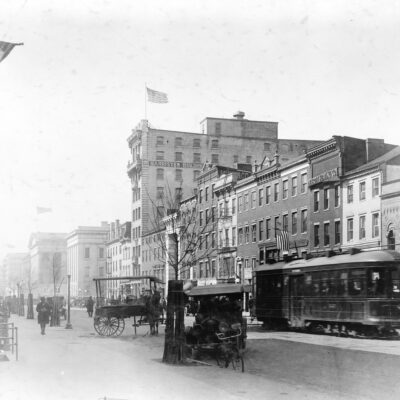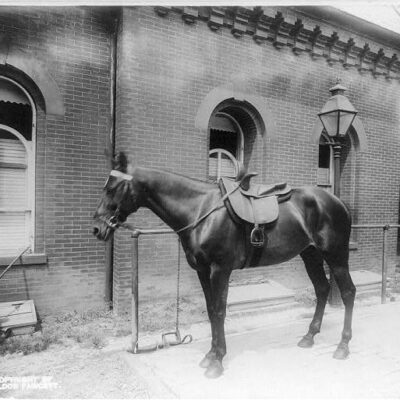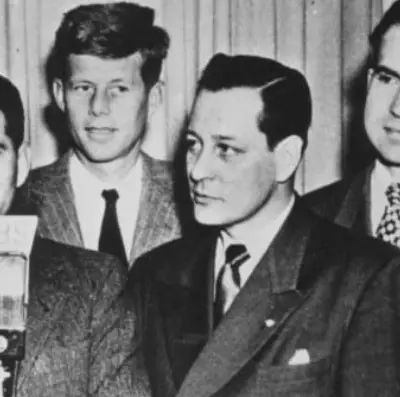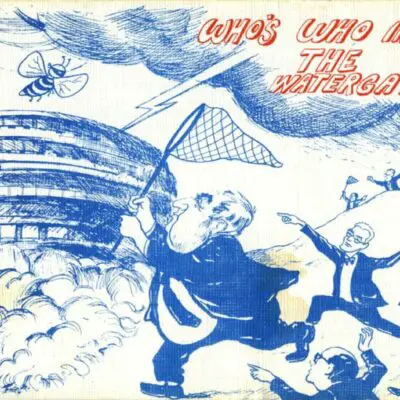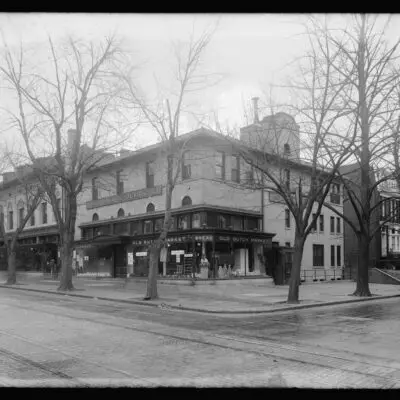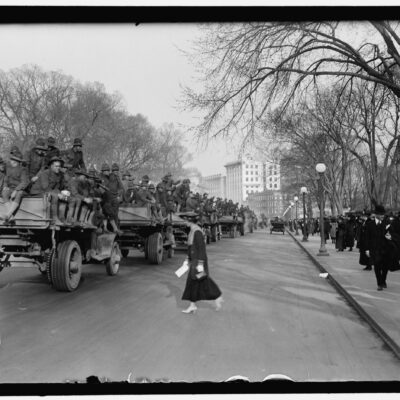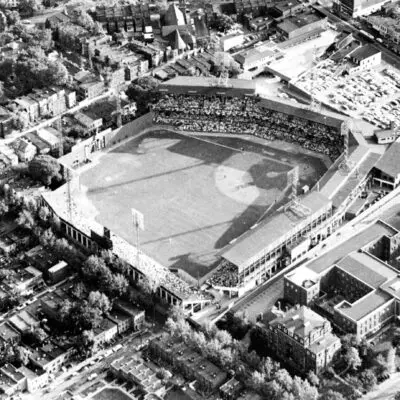Ghosts of DC took a little trip to the Bay Area this weekend and we wanted to sprinkle a little San Francisco flavor into this next post. We can think of no better subject than Alcatraz (aka, The Rock) and the story of Frank Lee Morris, a career criminal with a high IQ of 133, and Washington native.
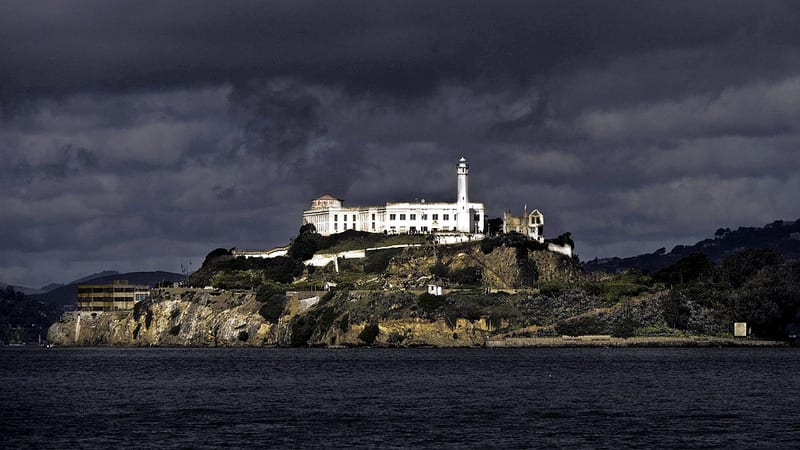
Some Alcatraz history
A brief history of the island … it started out as the site for a lighthouse until President Millard Fillmore ordered it to be used as a military base in 1850, following the Mexican-American war. It continued to serve in a military capacity through the Civil War and, in addition, began housing Confederate prisoners of war.
It was used primarily as a military prison until, in 1933, the Department of Justice acquired the island for use as a maximum security prison for the worst of the worst felons. The following year, 137 prisoners were transported from Fort Leavenworth, Kansas and Alcatraz began its service as part of the Federal Bureau of Prisons system. It remained part of the system until Attorney General Robert F. Kennedy ordered in closed in 1963.
Who was Frank Morris?
Prisoner #AZ1441, Frank L. Morris, arrived at Alcatraz on January 3rd, 1960 (the day after JFK announced his candidacy for President). Morris was a professional inmate, having lived a life behind bars for the better part of his life. His criminal life began at the early age of 13.
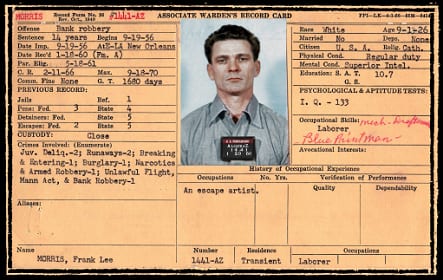
Morris was born on September 1st, 1926 at Gallinger Hospital in Washington, D.C. (more recently known as D.C. General Hospital near RFK Stadium – and closed in 2001). Not much of his youth is documented, but according to FBI documents, he was orphaned at the age of 11 and sent to live in foster homes.
A couple of years later, on November 13th, 1940, he was convicted of theft and sentenced to the National Training School for Boys, a reform school in northeast D.C., where he was taught to repair shoes. The sentence was originally 6 years, 9 months and 18 days, however, he was paroled in less than a year.
Freedom did not last long for Frank as he violated it within a year and was back in reform school at Chillicothe, Ohio in 1943. In 1945, he was returned to D.C., as an inmate in the National Training School for Boys. Side note: in 1951, Charles Manson was an inmate at the school.
According to FBI files, he served time in the Louisiana State Penitentiary between November 19th, 1945 and July 12h, 1948. Less than a year after his release, he was incarcerated in Florida State Penitentiary for breaking and entering.
On June 13th, 1952, he was sentenced to serve 10 years at the Louisiana State Penitentiary for possession of narcotics and armed robbery.
Clearly Frank was ensconced in a life of crime and we don’t need to run through his entire rap sheet. Just check it out below … and by the way, did you know rap sheet is an acronym for record of arrest and prosecution? I did not.
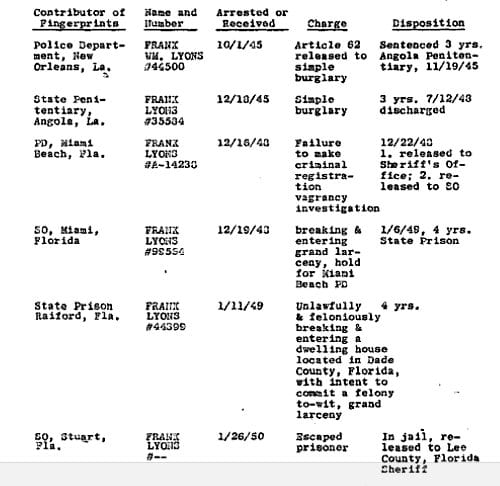

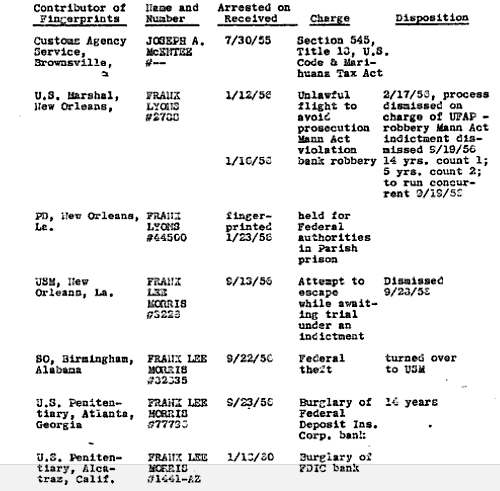
After this long list of offenses, Frank Morris is locked up as prisoner #AZ1441 at Alcatraz. After a number of successful escape attempts from other prisons under his belt, he beings to hatch an escape plan from The Rock.
Of course, nobody has ever successfully escaped from this prison. Prior to his attempt, only 12 had been made, involving 31 inmates, all of whom were captured or died trying (one escape in 1937 lists two inmates as never being recovered, but presumed dead).
Morris was said to have an I.Q. of 133, borderline genius, and was the mastermind of the escape plot. He had three accomplices in the plan: Allen West (#AZ1335) and brothers Clarence (#AZ1485) and John Anglin (#AZ1476).
The escape plan
The plan involved the men chiseling through the walls in their cells over the course of a year, until the hole they created was large enough to crawl through. By May 1962, the holes were complete.
Three of the men were able to crawl through into an unused service corridor behind the wall. Unfortunately for West, the vent covering his hole was stuck and he was unable to get out, so Morris and the Anglins left him.
As part of their plan, each of the men had fashioned dummy heads out of plaster, toilet paper and hair from the prison barber shop. The heads were placed in their beds so the guards would think the inmates were still asleep.
Last, a crude raft was fashioned out of rubber raincoats and plastic bags. What happened next was nothing short of amazing.
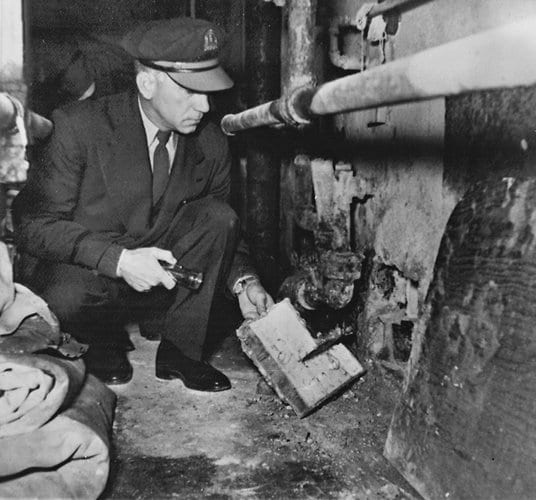
The men crept through the unused corridor, up a shaft of pipes to the roof and across the roof, in plain site of the guard tower with their makeshift gear in tow. Somehow, they were able to shimmy down a 50-foot kitchen pipe affixed to the wall, while the wall was illuminated sporadically with a search light, yet they remained undetected (someone in the guard house taking a little snoozer?).
The continued, climbing two successive 12-foot, barbed-wire fences and headed for the island’s northeast shore to inflate the raft. By 10 p.m. that evening, they had set off into the dense fog covering the bay. They were never seen or heard from again.
The following day, a search party found the remains of the raincoat raft on Angel Island, two miles north of Alcatraz. Along with the raft was discovered a small plastic bag containing the personal effects of the Anglins.
To further add to the mystery, footsteps were seen heading away from the raft on the beach.
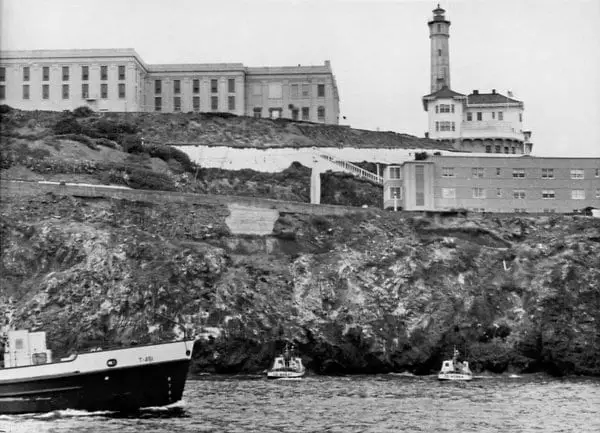
In 1979, the three were declared legally dead and the FBI closed the case. The case was transferred over to the United States Marshals Service and in 1993, it was reopened. The official position of the marshals service is that the inmates likely drowned in their attempt, however, their spokesman, Dave Branham was quoted as saying, “we think there is a possibility they are alive.”
The legend of this escape lives on today, 50 years later. Most people believe that the men died in their escape, but a number of people believe they made it. This is a tale, much like that of D.B. Cooper, which will likely remain unsolved.
A warrant still exists for Frank, John and Clarence. If they are still alive, they will be happy to know that those warrants will expire when each hits their 100th birthday.
